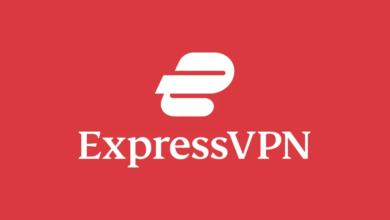
In today’s digital landscape, businesses are increasingly migrating operations to the cloud to leverage its scalability, flexibility, and cost-efficiency. However, this transition also introduces a unique set of security risks that must be addressed to protect sensitive data and maintain operational resilience.
Secure Cloud Infrastructure
Building a secure cloud infrastructure is critical for businesses looking to harness the power of the cloud without compromising on security. With the right practices and tools, a secure cloud infrastructure not only protects business assets but also reinforces customer trust, enabling long-term growth.
Benefits of Secure Cloud Infrastructure for Businesses
A well-secured cloud infrastructure provides significant benefits for organizations across various industries. First and foremost, it offers scalability, allowing businesses to expand resources in line with demand while keeping operational costs manageable.
Additionally, secure cloud environments support data protection practices essential for compliance with industry regulations, reducing the risk of penalties and reputation damage. Moreover, a robust cloud infrastructure facilitates efficient disaster recovery, enabling rapid recovery from potential incidents with minimal disruption to operations.
Read More : How to Set Up a Secure Home Network: Technology Guide 2025
Understanding Cloud Infrastructure Components
To build a secure cloud infrastructure, it’s essential to understand its primary components:
- Compute Resources: Virtual servers and processing power that handle application workloads.
- Data Storage: Systems for storing data, including databases and file storage solutions.
- Networking: Virtual networks and security controls that manage data flow and connections within the cloud.
- Security and Compliance: Mechanisms and protocols, like identity management and encryption, that ensure data safety.
These components, when integrated securely, form the backbone of a cloud environment capable of supporting business needs while mitigating risks.
Challenges in Cloud Security
Despite the advantages of cloud computing, there are several inherent challenges to securing cloud infrastructure effectively:
- Multi-Tenancy: Shared environments can increase the risk of cross-tenant data breaches.
- Data Privacy and Sovereignty: Ensuring that data stored in different geographic locations adheres to regional regulations.
- Visibility and Control: Limited control over infrastructure managed by cloud providers can impact security monitoring and response.
- Evolving Cyber Threats: The dynamic nature of cyber threats, from ransomware to DDoS attacks, requires constant vigilance.
Understanding these challenges is crucial for building an infrastructure that withstands the complexities of cloud security.
Essential Security Features of Cloud Infrastructure
To protect cloud resources and data effectively, your cloud infrastructure should incorporate the following security features:
- Encryption: Encrypts data both at rest and in transit, safeguarding it from unauthorized access.
- Firewalls: Sets up barriers to control incoming and outgoing network traffic based on security rules.
- Identity and Access Management (IAM): Manages user identities, permissions, and access to resources.
- Multi-Factor Authentication (MFA): Adds an extra layer of security to prevent unauthorized access.
These features establish a foundation for a secure cloud environment that limits unauthorized access and maintains data confidentiality.
Steps to Building a Secure Cloud Infrastructure
Building a secure cloud infrastructure involves several critical steps:
- Assess Your Security Needs: Determine specific security requirements based on business goals and compliance obligations.
- Choose the Right Cloud Model: Decide between public, private, or hybrid cloud solutions based on the level of control needed.
- Implement IAM: Set up strong identity management policies to regulate access to cloud resources.
- Configure Network Security: Use virtual firewalls, VPNs, and segmentation to protect the cloud network.
- Enable Continuous Monitoring: Employ monitoring tools to detect and respond to suspicious activity.
- Regularly Test and Audit: Conduct security audits and vulnerability assessments to identify and address potential weaknesses.
Each of these steps contributes to creating a resilient cloud environment capable of supporting secure business operations.
Choosing the Right Cloud Service Model
The choice between public, private, and hybrid cloud models significantly impacts security requirements and operational flexibility:
- Public Cloud: Ideal for scalability and cost-efficiency but requires rigorous security configurations due to its shared environment.
- Private Cloud: Offers enhanced control and security, suited for industries with strict regulatory demands.
- Hybrid Cloud: Combines elements of both, allowing for flexibility in workload distribution with increased security considerations.
Selecting the appropriate model aligns your cloud infrastructure with business needs, allowing for optimal security without compromising performance.
The Role of Cloud Providers in Security
While cloud providers like AWS, Microsoft Azure, and Google Cloud Platform implement foundational security measures, clients remain responsible for configuring additional layers to protect their data and applications. This “shared responsibility model” requires businesses to stay proactive by monitoring security practices, updating permissions, and employing third-party security tools as necessary. By understanding the responsibilities held by both parties, companies can establish a collaborative approach to secure cloud operations.
Implementing Identity and Access Management (IAM)
IAM is an essential component of cloud security that helps businesses control access to resources:
- Role-Based Access Control (RBAC): Assigns permissions based on user roles, minimizing exposure to sensitive data.
- Single Sign-On (SSO): Simplifies access by allowing users to log in once to access multiple applications.
- Audit Logs: Tracks user activity to detect and respond to suspicious behavior.
Implementing a robust IAM framework not only enhances security but also simplifies management of user permissions across cloud services.
Data Encryption in the Cloud
Encrypting data is a non-negotiable aspect of cloud security, protecting information from interception by unauthorized users. Implementing encryption in transit (during data transfer) and encryption at rest (when stored) ensures data is protected throughout its lifecycle. Many cloud providers offer encryption services, but businesses should verify these tools meet their security and regulatory standards.
Securing Data in Transit and at Rest
Data security is most effective when measures are in place both during data movement and when it resides in storage. To secure data in transit, TLS/SSL protocols are commonly used to create encrypted connections between clients and servers. For data at rest, organizations can employ AES-256 encryption, one of the most secure encryption standards. This dual approach strengthens the cloud infrastructure against interception or breach at any stage.
Conclusion
Building a secure cloud infrastructure is crucial for businesses seeking to innovate without sacrificing security. By understanding the essentials—from IAM and encryption to compliance and continuous monitoring—companies can protect their digital assets and customer data while leveraging the transformative benefits of the cloud. Following these steps not only enhances security but also promotes operational resilience, giving businesses a strong foundation in today’s digital economy.











